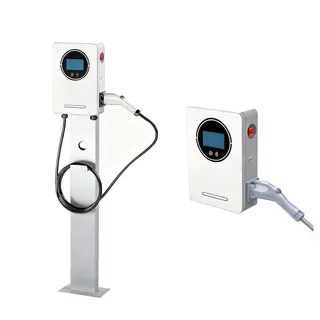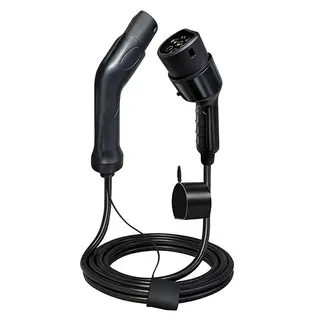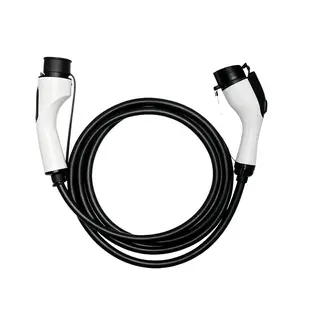As electric vehicles (EVs) become increasingly widespread, the choice of charging method has become one of the main concerns for electric car owners. In particular, fast charging can quickly replenish a vehicle's energy, significantly saving waiting time. However, discussions about whether fast charging damages battery life have never ceased. So, does ev fast charging really cause irreversible harm to batteries? Today, we will explore this topic in depth.
First, we need to understand the basic principles of fast and slow charging. The process of charging an electric vehicle essentially involves transferring electrical energy from the charging station to the battery, allowing lithium ions to move between the positive and negative electrodes. The difference between fast and slow charging mainly lies in the charging current and speed.
Slow charging usually uses standard alternating current (AC), with relatively low charging currents, generally ranging from a few amperes to several tens of amperes. This type of charging is relatively gentle, like "trickling" energy into the battery. Charging time is longer, usually taking 6 to 8 hours to fully charge the battery. The advantage of slow charging is that it has a smaller impact on the battery and can extend battery life. In addition, slow charging equipment is relatively simple, low-cost, and suitable for fixed locations such as homes or workplaces.
Fast charging uses direct current (DC), with charging currents several times or even dozens of times higher than slow charging, allowing large amounts of energy to be delivered to the battery in a short time. Fast charging power is relatively high, generally ranging from tens of kilowatts to over one hundred kilowatts, and can charge the battery to about 80% in approximately half an hour. The advantage of fast charging is its speed, making it suitable for long trips or urgent use.
Fast charging does not charge the battery at high current from 0% to 100%; it occurs in three stages:
Pre-charging state: The Battery Management System (BMS) inspects the battery to ensure it is in a safe condition before entering the high-current charging stage.
High-current constant current charging: In this stage, the charging current is maintained at a relatively high level, and the battery's charge increases rapidly.
Constant voltage charging: As the battery approaches full charge, the current gradually decreases, entering the constant voltage stage to prevent overcharging.
So, does fast charging really damage battery life? The answer is complex. In theory, frequent fast charging can indeed cause some harm to the battery. During fast charging, due to the high charging current, the migration rate of lithium ions inside the battery increases, which can easily lead to polarization of the battery cells. During polarization, lithium ions may deposit on the surface of the anode to form metallic lithium. As metallic lithium continues to accumulate, it can form so-called "lithium dendrites." The growth of lithium dendrites can destroy the internal structure of the battery, reduce battery capacity, and even pierce the battery separator, leading to internal short circuits and safety hazards.
The formation of lithium dendrites is a key factor in the impact of fast charging on battery life. The essence of a lithium-ion battery's operation is the movement of lithium ions between the positive and negative electrodes. However, during charging, due to material limitations, the process of lithium intercalation is uneven, and lithium ions may deposit on the anode surface, forming metallic lithium. As lithium metal continues to deposit, lithium dendrites form. The growth of dendrites leads to instability at the electrode-electrolyte interface during battery cycling, damaging the formed solid electrolyte interphase (SEI) film. During growth, dendrites continuously consume electrolyte and cause irreversible lithium deposition, forming "dead lithium," which reduces battery capacity and lifespan. They may also pierce the separator, causing internal short circuits, thermal runaway, and potentially fire or explosion.
However, the battery management system (BMS) in modern EVs largely mitigates the negative impact of fast charging. The BMS monitors battery voltage, current, temperature, and other parameters in real time, ensuring the battery charges within safe limits. When the battery temperature is too high or the charge is near full, the BMS automatically adjusts the charging current to prevent overcharging or overheating. In addition, battery technology continues to improve. For example, lithium iron phosphate (LFP) batteries have relatively stable chemical properties and better tolerance to fast charging.
Although fast charging may have some impact on battery life, there are ways to minimize this effect in practice. The following are some practical suggestions:
Avoid frequent fast charging whenever possible. If conditions allow, it is recommended to use "daily slow charging, emergency fast charging." For example, charge the vehicle slowly at home overnight, giving the battery enough time for chemical reactions to reduce polarization. Fast charging can be used during long trips or when rapid energy replenishment is needed.
High temperatures are detrimental to batteries. Whether fast or slow charging, avoid charging in high-temperature environments. If the vehicle has been exposed to heat for a long time, park it in a shaded area to lower the battery temperature before charging. Some advanced charging stations use liquid cooling technology to reduce temperature during charging, improving efficiency.
According to recommendations from Tesla, XPeng, and other manufacturers, maintaining battery levels between 50% and 90% is ideal. Avoid letting the battery become too low or staying fully charged for long periods, which helps extend battery life.
Regularly inspect battery condition to detect and address potential issues. If battery capacity declines significantly or charging times increase, contact professional maintenance personnel for inspection and servicing.
Beyond charging method, battery life is influenced by multiple factors:
Different types of lithium batteries, such as lithium iron phosphate, lithium manganese oxide, and ternary lithium, have different performance and lifespans. Generally, LFP batteries have longer cycle life and higher safety but lower energy density, whereas ternary lithium batteries have higher energy density but shorter lifespan and lower safety. Battery design and manufacturing quality also affect longevity; high-quality batteries use stricter materials and production processes, providing longer service life.
Driving and charging habits significantly impact battery life. Frequent rapid acceleration and braking increase battery load and temperature, affecting lifespan. Extended vehicle inactivity can also cause self-discharge, affecting performance. Owners are advised to maintain smooth driving habits and avoid unnecessary rapid acceleration or braking.
Battery performance is affected by extreme temperatures. In cold winters, battery discharge capacity decreases, and charging time increases. In high temperatures, battery aging accelerates. Avoid driving and charging in extreme conditions whenever possible.
While fast charging may affect battery life in some situations, slow charging is not without limitations. Its advantages lie in gentle charging with minimal impact on battery life, and low-cost, simple equipment suitable for fixed locations. However, slow charging takes longer, which may inconvenience frequent drivers. For long trips relying solely on slow charging, travel time may increase significantly. For large-capacity batteries, slow charging efficiency is relatively low.
To better understand fast charging's impact on batteries, consider the following cases:
Frequent Fast Charging: A certain EV owner primarily used fast charging in daily operation. After a period, the driving range declined. Battery tests confirmed capacity reduction, indicating that frequent fast charging can indeed affect battery life.
Balanced Charging Habits: Other owners used "daily slow charging, emergency fast charging" while maintaining battery levels within the recommended range. After the same period, their battery capacity declined minimally, and driving range remained stable, showing that proper charging practices and habits significantly influence battery life.
Overall, both fast and slow charging have advantages and disadvantages. Fast charging quickly replenishes energy but may reduce battery lifespan if overused; slow charging is gentle and prolongs battery life but takes longer. In practice, owners should choose charging methods based on needs and usage habits, maintain battery levels within a reasonable range, avoid charging in high temperatures, and regularly check battery status to extend battery life. Understanding proper charging strategies allows EV owners to enjoy convenience and sustainability while protecting their vehicles and extending battery longevity.



